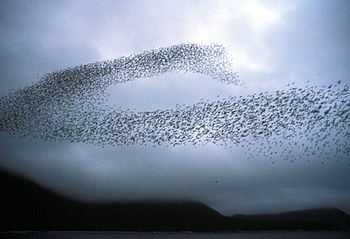Feeding frenzy

Carp (
Cyprinus carpio) competing for food at the pond of the Royal Palace Agdal of Marrakech in Morocco
In ecology, a feeding frenzy occurs when predators are overwhelmed by the amount of prey available. For example, a large school of fish can cause nearby sharks, such as the lemon shark, to enter into a feeding frenzy. [1] This can cause the sharks to go wild, biting anything that moves, including each other or anything else within biting range. Another functional explanation for feeding frenzy is competition amongst predators.[2] This term is most often used when referring to sharks or piranhas.[3] It has also been used as a term within journalism.[4]
"A shark feeding frenzy occurs when a number of sharks fight for the same prey. Sharks are usually solitary diners, and a feeding frenzy indicates why that might be. To an observer, it looks like the sharks lose their mind biting at anything that's in their way in an uncontrollable rage. They thrash around, their snouts elevating and their backs arching, all signs that indicate an impending attack. Some accounts tell of sharks eating each other and of sharks continuing to feed even after they've been disemboweled by other sharks."[5]
See also
References


